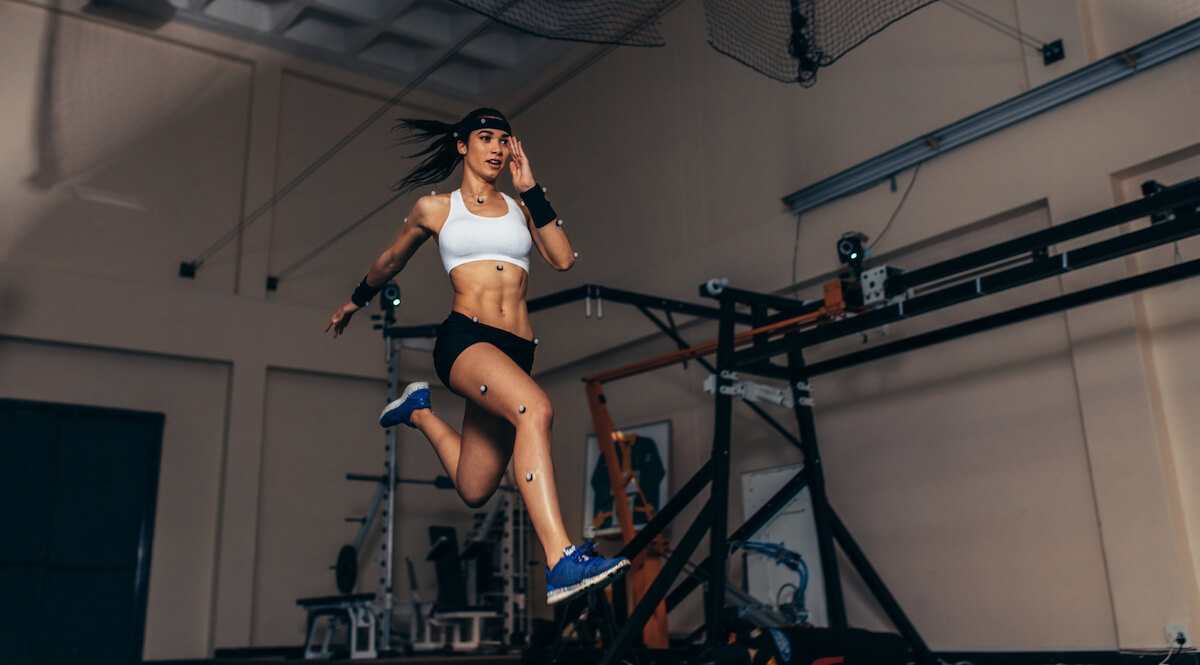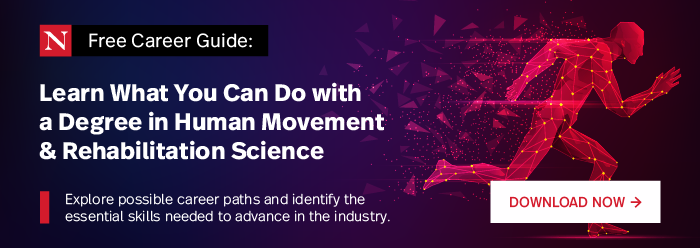The human body is an incredible piece of machinery. The complex mechanics of our bodies allows for the movement we require to care for our families, compete in athletics, pursue meaningful careers, and so much more.
Unfortunately, it’s not always possible for the body to operate at peak performance. Injuries, disabilities, and illness can all inhibit a person’s ability to perform daily physical activities, from the most basic to strenuous levels. When left untreated, these conditions can lead to a severe loss of personal agency.
The study of human movement and rehabilitation science works to address these issues. Below, we define human movement and rehabilitation science, discuss why it is an essential field of study, and offer some advice for individuals interested in pursuing a career in the field.
What Is Human Movement and Rehabilitation Science?
Human movement and rehabilitation science is a field of study focused on applying knowledge about mechanisms and methods of restoring and maximizing human functional capacity and well-being across the lifespan. Such work aims to advance the understanding of human movement to support physical activity in everyday life, including in occupational and recreational settings.
In other words, “Movement science is the broad look at the interacting fields relating to how we understand and optimize the function of the human body across the spectrum from sport, to work, to health and safety,” says Kristin Greenwood, clinical professor and chair of the Department of Physical Therapy, Movement, and Rehabilitation Sciences at Northeastern University.
Interested in a Career in Human Movement Science?
Download our free guide to learn the skills you need to advance in the industry.
Why Is Human Movement Science Important?
The study of human movement science has contributed to countless technological advancements and breakthroughs in our understanding of how the human body works in pursuit of supporting well-being at every stage of life.
Some examples of current research areas include worker health and wellness, running injury rehabilitation and prevention, and human movement and performance measurement through data collection and artificial intelligence. Each of these advancements, among others, has contributed to a deeper understanding and improved support of physical activity in daily life.
Research in the field aims to answer questions such as: How can athletes maximize their physical performance? How can assistive technology improve the well-being of those with disabilities? How can injuries be effectively prevented and/or treated in at-risk populations?
The Occupational Biomechanics and Ergonomics Laboratory at Northeastern University, for example, conducts research related to the prevention of work-related musculoskeletal disorders. Using state-of-the-art facilities, research teams leverage laboratory and field studies that utilize biomechanics, neuromuscular, exposure-response, and intervention study designs and methods to understand injury mechanisms. Such research results in a deeper understanding of how workplace-related injuries and disorders occur and, thus, how they can be prevented more effectively.
The Movement Neuroscience Laboratory at Northeastern is another group dedicated to answering related HMS questions. Current research initiatives include studies of the treatment and measurement of recovery in stroke patients, as well as other topics in movement neuroscience.
Research into these human movement and rehabilitation science issues plays an essential role in furthering the understanding of the human body and the optimization of performance and well-being. Moreover, this work continues to contribute to breakthroughs in rehabilitation methods.
Getting Involved in Human Movement and Rehabilitation Science
The path toward a career in human movement and rehabilitation science has typically required a PhD in a related field. Such programs of study prepare students to conduct independent basic, translational, and applied research within the field in order to further the advancement of well-being and rehabilitation across the lifespan.
The road to earning your PhD can be long and is typically geared toward individuals interested in working in research or academia.
Many individuals, however, would prefer to work directly in industry, holding job titles such as biomechanical engineer, rehabilitation engineer, clinical engineer, and more. For those individuals, an alternative path exists aside from earning a PhD: pursuing a master’s degree in human movement science.
A master’s degree, such as Northeastern University’s MS in Human Movement and Rehabilitation Sciences, is an ideal option for anyone with a background in a technical field (such as biomechanics, kinesiology, engineering, or other clinical fields like physical therapy) looking to work in the human health and movement space. The master’s degree path is typically completed more quickly than related PhD programs, allowing students to work in industry sooner and put their knowledge to practice.
Learn more about the MS in Human Movement and Rehabilitation Sciences at Northeastern, and take your first step toward a career in this exciting field today.







Related Articles
Human Resources Analytics: What It Is and Why It’s Important
3 Top Careers in Human Movement & Rehabilitation Science
Is an MS in Human Movement & Rehabilitation Science Worth It?